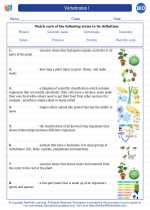Hibernation
Hibernation is a state of inactivity and metabolic depression in animals, characterized by lower body temperature, slower breathing, and lower metabolic rate. It is an adaptation that helps animals conserve energy and survive harsh environmental conditions, such as extreme cold or food scarcity.
Physiological Changes During Hibernation
During hibernation, animals undergo several physiological changes:
- Body Temperature: The body temperature of hibernating animals drops significantly, often approaching the temperature of their surroundings. This helps conserve energy.
- Metabolic Rate: Metabolic processes slow down, allowing the animal to survive for long periods without food.
- Respiration: Breathing becomes slower and more shallow, further reducing energy expenditure.
- Heart Rate: The heart rate decreases, helping to conserve energy and resources.
Animals that Hibernate
Many mammals and some reptiles and amphibians are known to hibernate. Common hibernating animals include:
- Bears
- Groundhogs
- Chipmunks
- Bats
- Some species of snakes and turtles
Adaptations for Hibernation
Animals that hibernate have evolved specific adaptations to survive this period of inactivity. These may include:
- Fat Reserves: Hibernating animals often build up fat reserves during the warmer months to sustain them through hibernation.
- Insulation: Many hibernating animals seek out well-insulated dens or burrows to protect themselves from extreme cold.
- Behavioral Changes: Some animals exhibit specific behaviors before entering hibernation, such as building nests or burrows.
Study Guide
To study hibernation, consider the following key points:
- Define hibernation and describe the physiological changes that occur in hibernating animals.
- Identify at least three animals that hibernate and describe their hibernation behaviors and adaptations.
- Compare and contrast hibernation with other forms of dormancy, such as estivation and torpor.
- Discuss the ecological and evolutionary significance of hibernation in animal survival.
Understanding hibernation is important for appreciating the diverse strategies animals have evolved to survive in challenging environments.
.◂Biology Worksheets and Study Guides High School. Vertebrates I
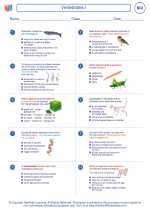
 Worksheet/Answer key
Worksheet/Answer key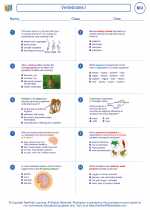
 Worksheet/Answer key
Worksheet/Answer key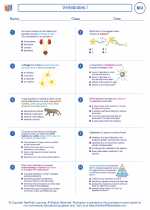
 Vocabulary/Answer key
Vocabulary/Answer key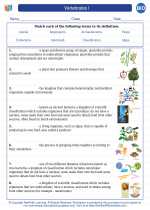
 Vocabulary/Answer key
Vocabulary/Answer key
 Vocabulary/Answer key
Vocabulary/Answer key